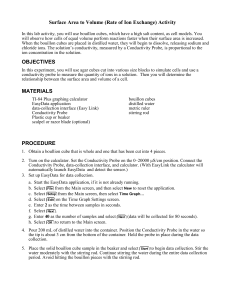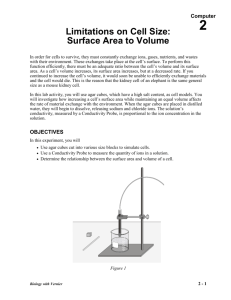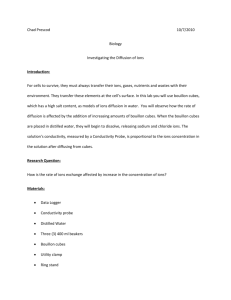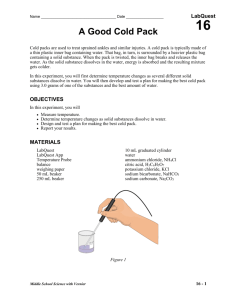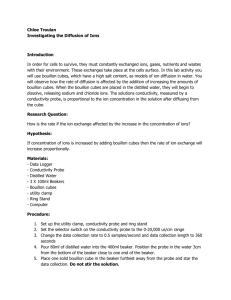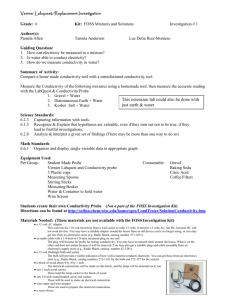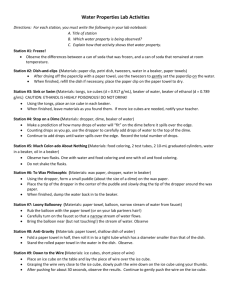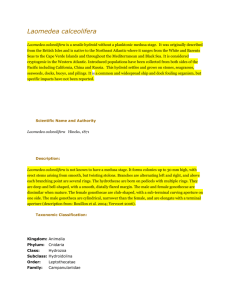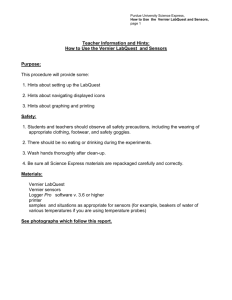Cell Size
advertisement
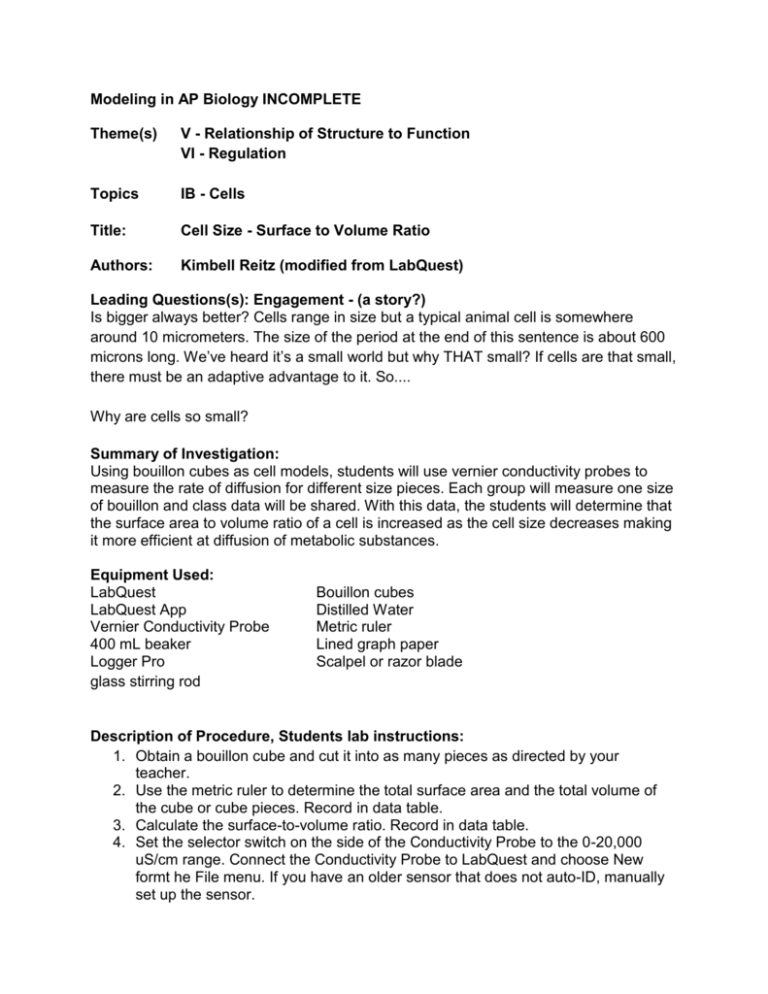
Modeling in AP Biology INCOMPLETE Theme(s) V - Relationship of Structure to Function VI - Regulation Topics IB - Cells Title: Cell Size - Surface to Volume Ratio Authors: Kimbell Reitz (modified from LabQuest) Leading Questions(s): Engagement - (a story?) Is bigger always better? Cells range in size but a typical animal cell is somewhere around 10 micrometers. The size of the period at the end of this sentence is about 600 microns long. We’ve heard it’s a small world but why THAT small? If cells are that small, there must be an adaptive advantage to it. So.... Why are cells so small? Summary of Investigation: Using bouillon cubes as cell models, students will use vernier conductivity probes to measure the rate of diffusion for different size pieces. Each group will measure one size of bouillon and class data will be shared. With this data, the students will determine that the surface area to volume ratio of a cell is increased as the cell size decreases making it more efficient at diffusion of metabolic substances. Equipment Used: LabQuest LabQuest App Vernier Conductivity Probe 400 mL beaker Logger Pro glass stirring rod Bouillon cubes Distilled Water Metric ruler Lined graph paper Scalpel or razor blade Description of Procedure, Students lab instructions: 1. Obtain a bouillon cube and cut it into as many pieces as directed by your teacher. 2. Use the metric ruler to determine the total surface area and the total volume of the cube or cube pieces. Record in data table. 3. Calculate the surface-to-volume ratio. Record in data table. 4. Set the selector switch on the side of the Conductivity Probe to the 0-20,000 uS/cm range. Connect the Conductivity Probe to LabQuest and choose New formt he File menu. If you have an older sensor that does not auto-ID, manually set up the sensor. 5. On the Meter screen, tap Rate. Change the data-collection rate to 0.5 samples/second and the data-collection length to 80 seconds. 6. Pour 200 mL of distilled water into the 400 mL beaker. Place the bouillon cube or cube pieces in the beaker. 7. Start data collection. Stir the water moderately and hold the probe in place approximately 3 cm from the bottom. Avoid hitting the bouillon pieces with the stirring rod. 8. Data collection will stop after 80 seconds. Analyse the graph to determine the rate of ion exchange. To do this: a. Examine the graph and identify the most linear region. b. tap and drag your stylus across the most linear region to select these data points. c. Choose Curve Fit from the Analyze menu. Select Linear as the Fit Equation. d. Record the slope, m, as the rate of ion exchange in (uS/s). Select OK. 9. Share data on the class data table. 10. Make a graph of rate vs. surface-to-volume ratio. Data Table: Pieces Surface Area (cm2) Volume (cm3) Surface to volume ratio Rate (uS/s) 1 2 4 8 Teacher Notes: Before the activity begins, the teacher should get a soaked towel and complain that it is soaked and needs to dry out before the end of the day. Fold the towel several times and place it on a counter to dry. The students intuitively know that it will dry faster if unfolded. After the students have shared and graphed the data they should whiteboard the results and what they think happened in the lab. The class should share the whiteboards with the rest of the class. At this time, revisit the wet towel and have the students explain scientifically, why it would dry faster if it were unfolded. Follow up Questions: On the Whiteboards 1. Draw what you think happened on the molecular level. 2. Relate this to the size of a cell. In Board Meeting 1. What is the relationship between rate of ion exchange and surface-to-volume ratio? 2. What is the advantage of a cell that has a large surface-to-volume ratio? 3. Which is more efficient at exchanging materials, a small or large cell? 4. Some cells in the body are adapted to absorbing or excreting large amounts of materials. How are these cells adapted to be more efficient at this task? 5. How does surface-to-volume ratio affect the radiation of metabolically produced heat from the cell? How would this affect cell metabolism? (think enzymes) 6. In order for a cell to remain efficient at exchanging materials and radiating heat, what must it do to maintain it’s surface to volume ratio?
